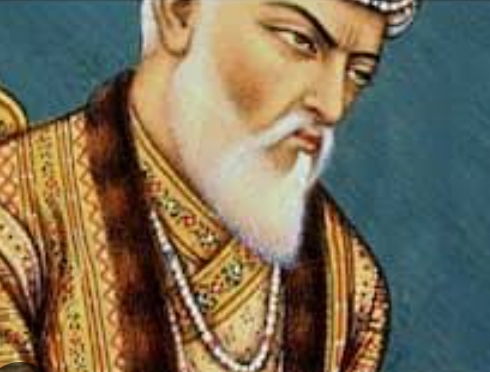“Mughals, the civilising force”- the lie peddled by Nehruvian Marxists


The Nehruvian Marxist historians have always tried to project Mughals as a civilising power to whom the Hindus of Bharat must honour as they were the ones who civilised this land of Bharat. Nehruvian Marxists never left an opportunity to whitewash the black deeds of Mughals and present them as heroes. Let’s look at 2 such myths-
1. Mughals brought firecrackers to the Indian subcontinent – This claim hold no water. Ancient Indians used Gunpowder long before Mughal invaders were even born . Ancient Indians used Saltpetre (Agnichurna), the major constituent of gunpowder, to make firecrackers (ulkah) on Diwali.
“Gunpowder originated in Ancient India”- Indologist Dr. Gustav Oppert .While it is true that use of Gunpowder in matchlocks proliferated in the middle ages. Ancient Indians used Saltpetre (Agnichurna) in mining and warfare. It was already mentioned by Kautilya in Arthashastra as a weapon of war (4th century BC) long before Mughals were born
From the time of Arthashastra down into the Medieval ages,North West Indians continued to use gunpowder in warfare.A Chinese text dating back 7th century CE attests to the use of Gun Powder in North West India.Snippet from “Military Transition in Early Modern Asia,1400- 1750” According to the old tradition of Muslim Arabs themselves, they learnt the use of Gunpowder (barud) from Indians. They received their earliest Gunpowder supplies from India. When Timur, the ancestor Abbu of Mughals invaded India in 1398 CE, Indian troops shot his army with rockets and fireworks. It shocked his troops and they were beaten in the initial engagement. Even in 13th century, a Mongol foreign ambassador to India was greeted with 3000 celebratory firecars which are much reminiscent of Indian firework celebrations during Dipavali and Kartika Purnima
Vaisampayana, the narrator of Mahabharata, describes the manufacture of smoke balls by ancient Indians using Gunpowder.Atharvanarahasya mentions the use of charcoal, sulphur and saltpetre to make fireworks,which are the same ingredients used even today to manufacture Gunpowder. Remarkable sculptures from Hoysaleswara Temple (Halebidu, Karnataka. built c.12th century) show warriors using rockets (fire arrows). Arrows were tipped with Gunpowder / flammable combustibles. They were known as Agnibanas and used together on a launching pad in wars. A sculpture from Halebidu (12th century) depicting rocket warfare in Ancient India.
Notice the launching pad that is holding the missiles/combustible arrows.Mughals brought Gunpowder to India? Yeah right While ancient Indians did use Gunpowder, what they did not have was a projecting weapon like a matchlock which could be integrated with the fire.They simply used to tip their arrows with Gunpowder and shoot at the enemy. Credit – Trueindology
2. “Today is the Bengali New Year, known in Bangla as Poila Boishakh. A number of Indian calendars, of course, have their new year around now: the Punjabi, Assamese and Tamil, to name a few. The modern Bengali calendar though is unique amongst these, given that it was introduced by the Mughal Empire. More than two decades into his rule, Emperor Akbar, third in the Mughal line, had set up, what was at the time, the most powerful empire on Earth. Secure in his power, the emperor’s attention shifted to the more intellectual side of things: religion, philosophy and the arts. Amartya Sen’s book, The Argumentative Indian, mentions how Akbar’s interest in various religions led him to dabble in the calendars of various faiths as well. As a result, as Sen put it, he invented “a combined calendar which paralleled his interest in floating a combined religion, the Din-e-Ilahi”. This calendar, modestly titled the Tarikh-e-Ilahi, calendar of God, was introduced in the year 1584 AD”, these were the words published by “Scroll.in” in one of it’s articles. In the article they try to propagate the myth that Mughals (Akbar) were the ones who created the Bengali calendar. Let’s dismantle the myth and crumble down this propaganda propagate to create a self loathing tendency upon Hindus.
It is claimed by certain historians and sections of the media that Mughal emperor Akbar invented the modern Bengali calendar. This is not true. Akbar did not create the Bengali Calendar. It is nowhere mentioned in Ain-i-Akbari or any other Mughal source. The calendar dates back to the time of King Shashanka, even before Islam was born.
The Bengali calendar was already used in inscriptions of Shiva temples in Bankura district, which are around 1000 years old. How on earth could Akbar create a Calendar that was used more than 500 years BEFORE he was even born?
[Source: The Land Of Two Rivers, Nitish Sengupta]
Credit- Trueindology
DISCLAIMER: The author is solely responsible for the views expressed in this article. The author carries the responsibility for citing and/or licensing of images utilized within the text.
1 Comment
You must be logged in to post a comment.

Why call them Mughals not Islamists?